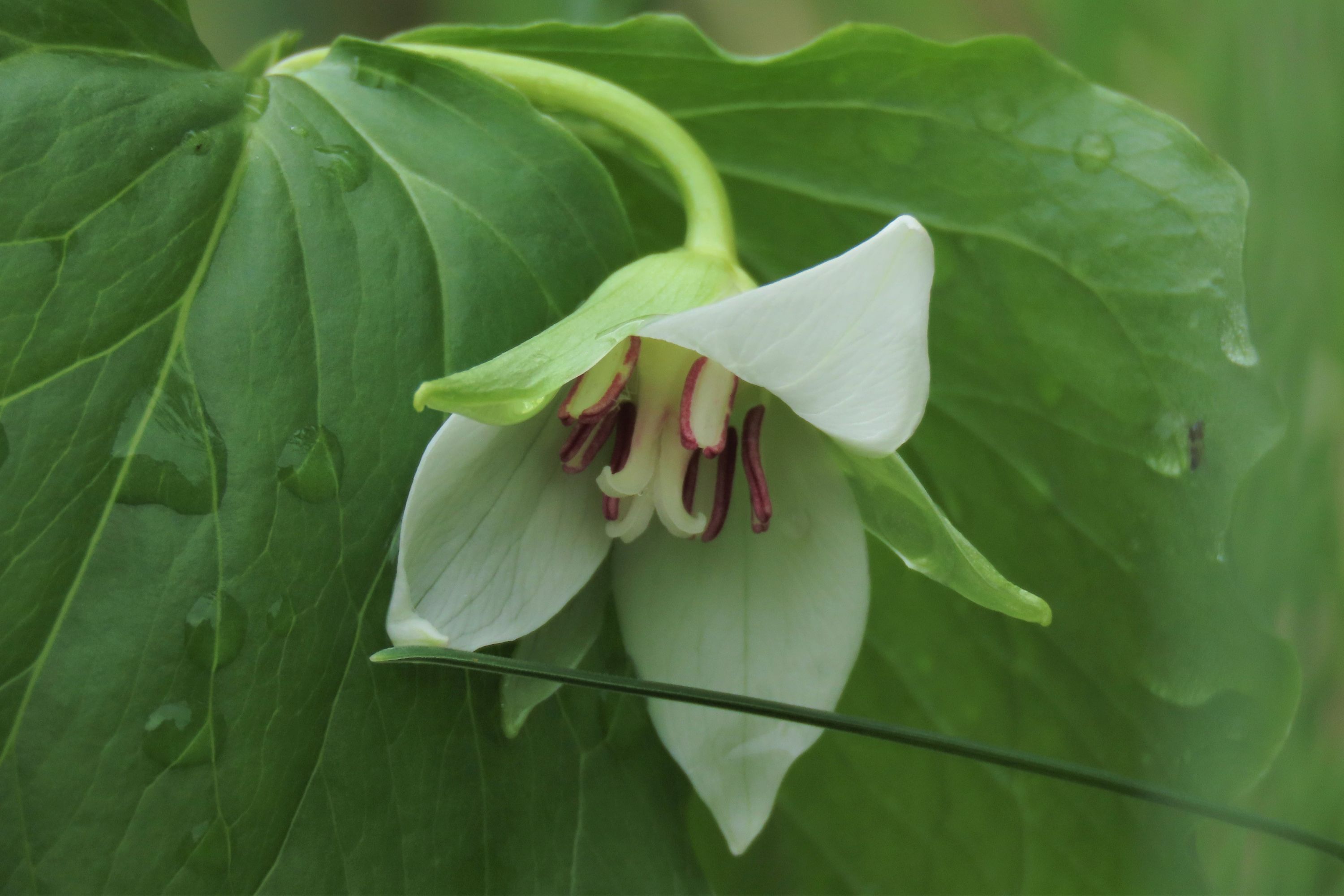Nodding trillium
(Trillium cernuum)

Description
Trillium cernuum is a species of flowering plant in the bunchflower family Melanthiaceae. The specific epithet cernuum means "drooping, curving forwards, facing downwards", a distinctive habit of its flower. It is commonly called nodding trillium or nodding wakerobin (not to be confused with Trillium flexipes) since the flower is invariably found nodding beneath the leaves. It is sometimes referred to as the northern nodding trillium to distinguish from Trillium rugelii, a similar nodding species native to the southern Appalachian Mountains. It is also called the whip-poor-will flower since presumably its bloom coincides with the spring arrival of the migrating bird with the same name. Trillium cernuum was thought to be one of three species of Trillium described by Swedish botanist Carl Linnaeus in 1753 (the other two being Trillium erectum and Trillium sessile). The specimen examined by Linnaeus was actually Trillium catesbaei, a nodding species native to the southern Appalachian Mountains where Trillium cernuum does not occur. This oversight led to much confusion, some of which continues to this day. Within its natural range, Trillium cernuum is often confused with two closely related Trillium species, Trillium erectum and Trillium flexipes. The three species are known to interbreed with one another, which adds to the confusion. The nodding trillium is the most northerly Trillium species in North America, occurring as far north as Hudson Bay and as far south as northern Virginia. (Reports south of Virginia are most likely other species such as Trillium rugelii, Trillium catesbaei, or Trillium flexipes.) Trillium cernuum is found on rich, moist soils in both broadleaf and coniferous woodlands. Trillium cernuum is a perennial herbaceous plant that spreads by means of an underground rhizome. Up to three scapes (stems) rise directly from the rhizome, each standing 15–40 cm (6–16 in) tall. At the apex of the scape is a whorl of three leaf-like bracts, each 5–15 cm (2.0–5.9 in) long and 6–15 cm (2.4–5.9 in) wide. Flowering occurs from late April to early June, possibly as late as July in the northern part of its range. A solitary flower hangs below the bracts (leaves) on a short recurved pedicel 1.5–3 cm (0.6–1.2 in) long. The flower has three slender pale green sepals, each 9–30 mm (0.4–1.2 in) long, and three strongly recurved white (rarely pink) petals, each 15–25 mm (0.6–1.0 in) long and 5–15 mm (0.2–0.6 in) wide.
Taxonomic tree:







